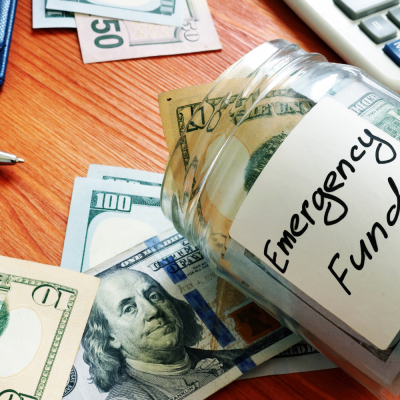 Have you ever been taken by surprise by an unexpected expense such as a car or home repair, a refrigerator that needs to be replaced immediately, or school expenses? Sometimes we need to act quickly so that we can get to work, keep a small problem from getting bigger, or make it possible for a child to participate in school activities. According to a recent Federal Reserve Report 40% of U.S. households indicated that they could not cover an unexpected $400 expense. Not having enough money to deal with unexpected expenses can be very stressful, but you can take action now to improve that situation over time. Starting an emergency fund is a great step toward increasing your family’s financial stability. A small amount of money saved regularly does add up. Saving $10 each week for a year (52 weeks) is $520.
Have you ever been taken by surprise by an unexpected expense such as a car or home repair, a refrigerator that needs to be replaced immediately, or school expenses? Sometimes we need to act quickly so that we can get to work, keep a small problem from getting bigger, or make it possible for a child to participate in school activities. According to a recent Federal Reserve Report 40% of U.S. households indicated that they could not cover an unexpected $400 expense. Not having enough money to deal with unexpected expenses can be very stressful, but you can take action now to improve that situation over time. Starting an emergency fund is a great step toward increasing your family’s financial stability. A small amount of money saved regularly does add up. Saving $10 each week for a year (52 weeks) is $520.
Potential Benefits of an Emergency Fund
- You may have more control over your finances.
- You may have more options when making financial decisions.
- It may reduce or eliminate the need for a loan or being charged for interest. It may help you improve your credit history.
- You can provide a great example for the next generation. You may feel less stressed.
- You may experience more peace of mind.
16 Ways to Save Money for an Emergency Fund
- Set a goal. Be specific about what you want and when you want it to happen. Estimate how much you will need. Put it in writing.
- Set up direct deposit. In addition to having money directed to your checking account, you can also check with your employer about also having a portion of your paycheck go directly to your savings account.
- Save your tax refund.If you expect a refund, direct some of it to your savings account by submitting IRS Form
- Pay yourself first. Make saving a priority among your
- Develop a spending plan. You can use a budget sheet, an online form, or a financial It will help in making decisions about how to spend your money.
- Work as a team. Discuss your savings goals as a family or household. Identify ways to save together.
- Use a spending tracker. List everything you purchase and every bill you pay. Keep track for at least one week—even better would be one or more months. It will increase your awareness of each expense and opportunities to save money.
- Review your spending. Look closely at each expense item. Is it still important to you? Are there free or lower cost ways to satisfy that need or want? Try to be open to other options.
- Try a “no-spend” month. This is when you commit to spend money only on basic living expenses such as the rent or mortgage payment, utilities, groceries, car payment, and other obligations.
- Make a savings “thermometer”. Put the amount of money you need to reach your goal at the Then add amounts at the halfway point and other amounts in between. Post it where you can see it regularly and update it.
- Save loose change. Small amounts of money saved regularly do add up.
- Comparison shop. Check out alternate products, services, and Call your current providers and ask about options for saving money.
- Challenge yourself. Make a specific commitment to save. You might decide to make all food at home for the month, wait three days before making a spending decision to make a wise choice, or use cash only for face-to-face purchases.
- Develop a spending plan. You can use a budget sheet, an online form, or a financial app. It will help in making decisions about how to spend your money.
- Take the Connecticut Saves Pledge. Visit www.ConnecticutSaves.org to set a goal for saving and receive helpful information for you to move closer to achieving it! You can also text CTSaves to 877877 to pledge to save.
- Take a financial education class. Sign up for a financial literacy workshop such as those provided by UConn Extension Financial Education Program. See www.financialliteracy.uconn.edu for more information.
UConn Extension Financial Education Program. For more information, call 203.407.3160 or write faye.griffiths-smith@uconn.edu